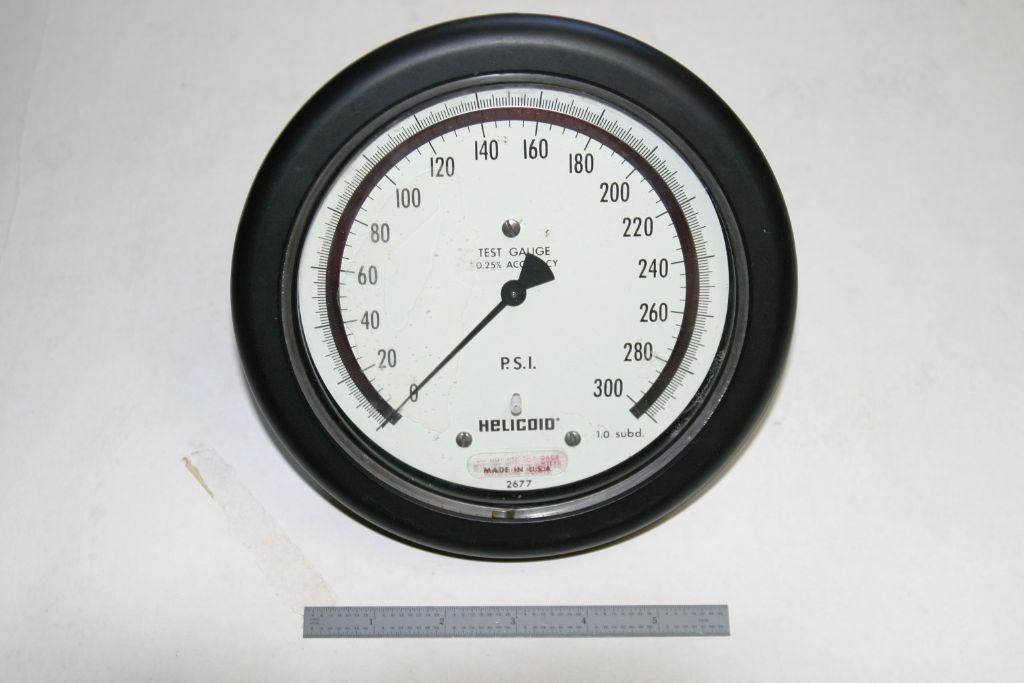Hiraoka’s book, Building the Heisler, goes into great detail in building a deadweight pressure gauge tester. He includes making the gauge, which I guess John does not require. The essential detail is that he suggests a ground or drawn 1/8” rod for the plunger (or piston), into a reamed hole in the cylinder. His drawing calls for a smooth sliding fit. There is no seal, as this would introduce friction, but he says that the small clearance causes very little leakage, due to the oil viscosity.
The deadweights sit on top of the pointed plunger, on a carrier that has a clearance to avoid contacting the cylinder. The weights have masses calculated to produce the required pressure, based on the cross-sectional area of the plunger. The carrier represents 25psi, plus three weights for 25 and two 50 psi weights. Maximum pressure is thus 150 psi. He allows the the miniscule mass of the plunger! I can quotes masses, if rquired.
The cylinder and adaptor to suit the gauge are made from hex brass, with suitable thread and cone to seal, and the two parts screw into a block or manifold with a 1/8” hole, with a plug to seal the end.
I haven't posted images as I'm not sure of the copyright; can a moderator comment. My copy published in 1986. I can provide further detailes if required.
Bill
DMB.





